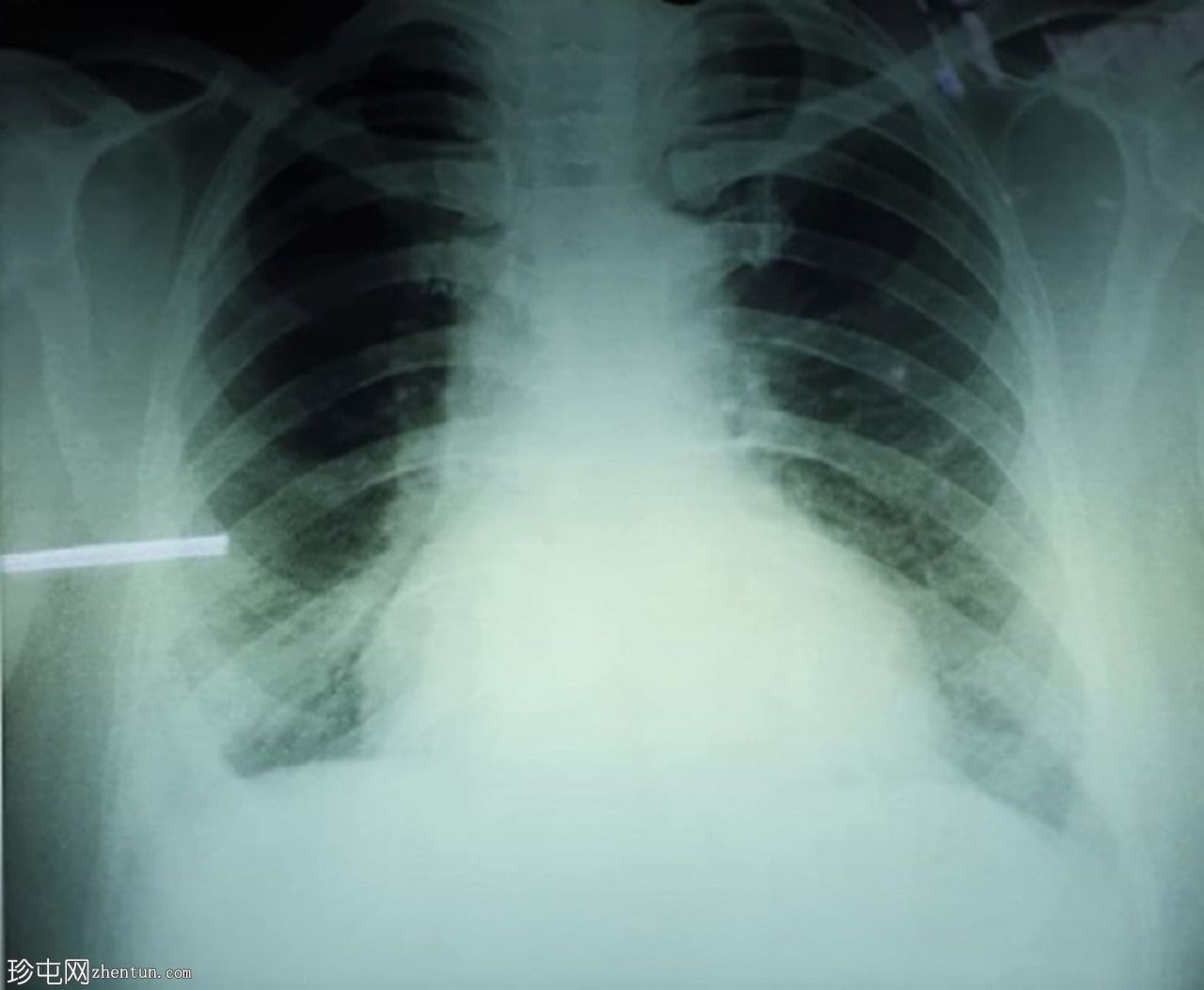无声缺氧(也称为快乐缺氧)是与呼吸急促不一致的全身性缺氧。 众所周知,这种表现是 COVID-19 的并发症,在行走性肺炎、高原反应和循环呼吸器潜水中也很常见。
警惕「沉默性缺氧」

成因
一种与 COVID-19 表现相关的理论表明,严重缺氧的处理受损和正常呼吸的恢复可能是由于病毒从口腔传播到大脑的神经通路。 据推测,这种情况是由于 SARS-CoV-2 影响肺气道的血流以及肺内的血管引起的,这些血管必须匹配才能允许适当的气流,但对它们的影响不足以 导致呼吸急促。 也有人推测无声缺氧可能是由肺内形成小血块引起的。有研究表明,COVID-19 患者的呼吸频率逐渐增加,进而导致无声缺氧。 还表明,与非 COVID-19 患者相比,COVID-19 患者在运动后出现的呼吸急促程度更轻。
在健康人中,当人吸入含氧量低且二氧化碳含量低的气体时,可能会出现这种表现,因此不会出现高碳酸血症警报反应。
概要
在 COVID-19 中,动脉和一般组织的氧气水平会在没有任何初始警告的情况下下降。 胸部 X 光检查可能显示弥漫性肺炎。 据报道,在氧气水平下降到有急性呼吸窘迫 (ARDS) 和器官衰竭风险的程度之前,没有出现呼吸急促或咳嗽的患者会出现 COVID-19 无声缺氧病例。 在《纽约时报》的一篇评论文章(2020 年 4 月 20 日)中,急诊室医生理查德·莱维坦报告说:“我遇到的绝大多数 Covid 肺炎患者在分诊时的血氧饱和度都非常低——似乎与生活不相容——但他们正在使用手机 当我们把它们放在监视器上时。”
诊断
用于诊断无声缺氧的工具是六分钟步行测试 (6MWT),其中患者以正常速度步行六分钟,以监测他们的生理反应。 已经证明,在进行 6MWT 后,COVID-19 患者比患有特发性肺纤维化的非 COVID-19 患者更容易出现运动引起的缺氧而没有症状。也可以首先检测病情 通过使用院前脉搏血氧仪。
治疗
治疗取决于病因。 在某些情况下需要补充氧气,在严重的情况下可能需要人工通气。 在轻微的情况下,原因是呼吸气体含氧量低,可能只需要返回正常含氧环境即可。 潜在的医疗问题可能需要评估和治疗。
预后
COVID-19 无症状缺氧的预后通常很差,因为血液中的氧气水平可能会下降到 50% 以下而不会引起注意。 在健康人暴露于缺氧环境的情况下,结果通常取决于相关组织损伤的程度。 在轻度病例中,恢复正常含氧呼吸气体后会迅速恢复正常。
流行病学
已知与以下相关:
高原反应
非典型肺炎
新冠肺炎
惰性气体窒息
涉及窒息环境的职业事故
循环呼吸器故障
技术潜水事故
参考资料:
Tobin MJ, Laghi F, Jubran A (August 2020). "Why COVID-19 Silent Hypoxemia Is Baffling to Physicians". American Journal of Respiratory and Critical Care Medicine. 202 (3): 356–360. doi:10.1164/rccm.202006-2157CP. PMC 7397783. PMID 32539537.
LaMotte S (7 May 2020). "Silent hypoxia: Covid-19 patients who should be gasping for air but aren't". CNN.
Pappas S (23 April 2020). "'Silent hypoxia' may be killing COVID-19 patients. But there's hope". Live Science.
"Three reasons why COVID-19 can cause silent hypoxia". ScienceDaily. 19 November 2020.
Emily H (3 June 2020). "Silent hypoxia and its role in COVID-19 detection". News Medical.
Chandra A, Chakraborty U, Pal J, Karmakar P (September 2020). "Silent hypoxia: a frequently overlooked clinical entity in patients with COVID-19". BMJ Case Reports. 13 (9): e237207. doi:10.1136/bcr-2020-237207. PMC 7478026. PMID 32900744.
Levitan R (20 April 2020). "The Infection That's Silently Killing Coronavirus Patients". The New York Times.
Bowden O (12 May 2020). "What is 'silent hypoxia'? The coronavirus symptom patients don't know they have". Global News.
Ottestad W (2020). "COVID-19 patients with respiratory failure: what can we learn from aviation medicine?". British Journal of Anaesthesia. 125 (3): e280–e281. doi:10.1016/j.bja.2020.04.012. PMC 7165289. PMID 32362340.
Gillespie C. "'Silent Hypoxia' Is Making Some Coronavirus Patients Critically Ill—Here's Why It's So Dangerous". Health.
Blanchet D, Greene S. "Your Captain Speaking: Silent Hypoxia and COVID-19". EMS World.
"Rebreathers guide for beginners". apdiving.com. Retrieved 11 May 2021.
Sellers, Steven H. (2016). "An Overview of Rebreathers in Scientific Diving 1998–2013". In Pollock, N.W.; Sellers, S.H.; Godfrey, J.M. (eds.). Rebreathers and Scientific Diving (PDF). Proceedings of NPS/NOAA/DAN/AAUS Workshop, 16–19 June 2015. Durham, NC. pp. 5–39. ISBN 978-0-9800423-9-9.
Sirohiya, Prashant, et al. “Silent Hypoxia in Coronavirus Disease-2019: Is It More Dangerous?-a Retrospective Cohort Study.” Lung India, 2021, https://doi.org/10.1101/2021.08.26.21262668.
"Silent Hypoxia Typically Not the First Symptom of COVID-19, Other Early Symptoms Should Be Monitored". American Lung Association. 15 May 2020.
Gupta J (20 November 2020). "Three reasons why coronavirus can cause silent hypoxia". Hindustan Times.
"COVID-19 complications: Silent hypoxia emerges as new killer in Kerala". The New Indian Express. 7 June 2020.
"Study explains why Covid-19 can cause silent hypoxia". The Tribune. 30 November 2020.
Srivastava A (23 May 2020). "Blood clots in the lung may be a major cause of COVID-19 deaths". The Hindu.
Wei-Haas M (8 May 2020). "They don't struggle to breathe—but COVID-19 is starving them of oxygen". National Geographic.
Fuglebjerg NJ, Jensen TO, Hoyer N, Ryrsø CK, Lindegaard B, Harboe ZB (October 2020). "Silent hypoxia in patients with SARS CoV-2 infection before hospital discharge". International Journal of Infectious Diseases. 99: 100–101. doi:10.1016/j.ijid.2020.07.014. PMC 7836996. PMID 32663601.
Levitan, Richard (2020-04-20). "Opinion | The Infection That's Silently Killing Coronavirus Patients". The New York Times. ISSN 0362-4331. Retrieved 2020-04-22.
"Six-Minute Walk Test". American Lung Association.
Fuglebjerg NJ, Jensen TO, Hoyer N, Ryrsø CK, Lindegaard B, Harboe ZB (October 2020). "Silent hypoxia in patients with SARS CoV-2 infection before hospital discharge". International Journal of Infectious Diseases. 99: 100–101. doi:10.1016/j.ijid.2020.07.014. PMC 7836996. PMID 32663601. S2CID 220530080.
Luks AM, Swenson ER (September 2020). "Pulse Oximetry for Monitoring Patients with COVID-19 at Home. Potential Pitfalls and Practical Guidance". Annals of the American Thoracic Society. 17 (9): 1040–1046. doi:10.1513/AnnalsATS.202005-418FR. PMC 7462317. PMID 32521167.
Torjesen I (27 October 2020). "Covid-19: Patients to use pulse oximetry at home to spot deterioration". The BMJ: m4151. doi:10.1136/bmj.m4151. S2CID 225078120.
Brouqui P, Amrane S, Million M, Cortaredona S, Parola P, Lagier JC, Raoult D (January 2021). "Asymptomatic hypoxia in COVID-19 is associated with poor outcome". International Journal of Infectious Diseases. 102: 233–238. doi:10.1016/j.ijid.2020.10.067. PMC 7604151. PMID 33130200.
Lari A, Alherz M, Nouri A, Botras L, Taqi S (December 2020). "Caution against precaution: A case report on silent hypoxia in COVID-19". Annals of Medicine and Surgery. 60: 301–303. doi:10.1016/j.amsu.2020.11.007. PMC 7640922. PMID 33169089.
Teo J (June 2020). "Early Detection of Silent Hypoxia in Covid-19 Pneumonia Using Smartphone Pulse Oximetry". Journal of Medical Systems. 44 (8): 134. doi:10.1007/s10916-020-01587-6. PMC 7305055. PMID 32562006. |